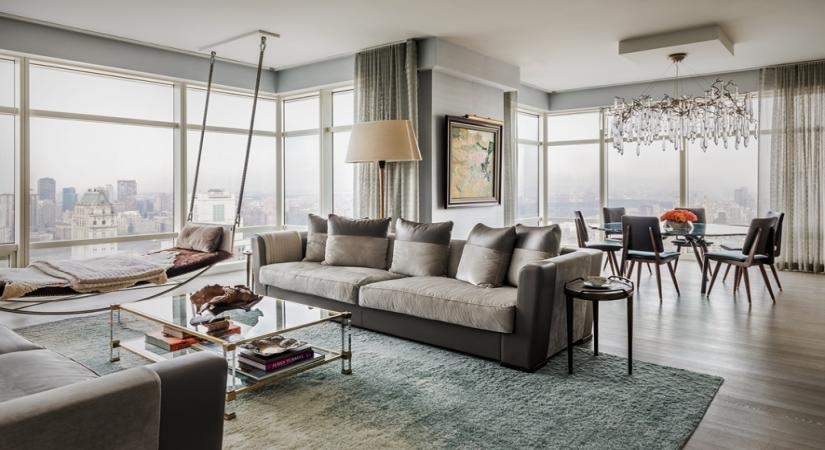Ace interior architect Shalini Misra talks about changing trends in design, architecture
The award-winning designer opens up about reimagining spaces and imbibing wellnesss New Delhi, August 23: The pandemic will change the approach to design and architecture in many areas of our lives including our own homes, the

The award-winning designer opens up about reimagining spaces and imbibing wellnesss
New Delhi, August 23: The pandemic will change the approach to design and architecture in many areas of our lives including our own homes, the offices, public and civic spaces. And the shift in focus will be on multi-functionality, sustainability and advance technology, says award winning interior architect, designer and property developer, Shalini Misra.
IANSlife spoke to Misra, who founded her multifaceted practice over 20 years ago, to know what changes in design and architecture to expect result of the pandemic.
Speaking on how the pandemic changed perspectives about infrastructure, Misra said “If this pandemic has created changes to infrastructure and architecture, it would not be the first one to do so. The same reaction to disease has been evident over centuries – when we have sometimes witnessed the widening of boulevards, a new approach to plumbing, or even the creation of open air sanitariums.”
She said, “So, I agree that there will be a change in approach to design and architecture in many areas of our lives including our own homes, the offices in which we work, the public and civic spaces that we move through and indeed perhaps most challengingly, the theatres, cinemas and stadia that we love to go to, to find entertainment on a large scale.”
“Open plan living which had become really popular is a problem now as we spend more time in our homes and need quieter zones. I have always designed open plan living with the addition of sliding doors which are extremely useful in partitioning and sound and visual proofing areas,” the architect said.
Japanese designs have always inspired her. She said, “I have used this mantra of addition through subtraction for many years that is having more rooms by subdividing big rooms.”
Steel will become popular
Mishra felt metal surfaces will become more popular. She said, “Steel which is 80 per cent recyclable easy to wipe clean is a great material for construction and visually appealing. Interior wise brass and bronze are popular too.”
Delving into the Indian scenario, Misra said, “In civic spaces, stadiums, theatres and other areas of public gathering, a great deal of creativity and planning will be required if we really are to live safely in a new normal. We already we see discussion and implementation of technology led solutions such as touch-less technology, automatic doors, voice activated elevators, hands free light switches and many other developments. Temperature screening and maybe even UV disinfecting technology may need to be incorporated into public life for this and future pandemics. Technology has a large part to play in creating the right solutions.”
“We have started to understand the impact of sustainability and I strongly feel the compulsion to use sustainable materials in architecture and design in such a manner to prevent global warming by using environmental friendly materials and designs,” she said.
Stress on multi-functional designs
On multi-functional designs, she said, “One of the first things that we have needed is space, in isolation, in order to conduct online meetings and keep our lives moving forwards. This is fine if you have a large home with plenty of rooms to retreat into away from other family members, but much more challenging if you live alongside others in a smaller city apartment.”
“Architects and designers are going to need to imagine spaces that can pivot from acoustic isolation to being more open and sociable in quick and easy stages. This is where architecture and design crossover and make use, for example, of the idea of elegant, practical and dynamic partitions, where rooms, or parts of rooms can be separated and divided off for specific purposes such as online meetings, or school education, before being changed up again at the end of the day for family enjoyment and living,” she said.
Focus on daylight exposure
On upcoming design trends, she said, “From a home perspective, I think if home-working continues at scale, there will be a big need to design multi-usage spaces that can pivot from one use to another. There will also be a focus on the re-purposing of private-outdoor space, maximising our exposure to daylight and fresh air, bringing the outdoors in and creating areas which may have been previously neglected, but can now be re-designed with zones for shade, work, relaxing and eating.”
On imbibing wellness in her creations, the designer said, “We imbibe wellness into our creations in numerous ways. Firstly, by understanding our clients, their lifestyle needs, aspirations and requirements and, ensuring that we study the available space with these factors in mind. Thereafter, room by room and space by space, we ensure that the best use of available light, airflow and natural energy is incorporated, as appropriate, for that space. Lighting is always of huge importance. Get this wrong and you could even be affecting somebody’s life detrimentally.”
The incorrect use and incorporation of light can damage our circadian rhythms. Colours can be calming in the right environment such as bedrooms, or creative in home offices, studios and work spaces.
“We will always ensure that we bring together the best use of natural light, colour and energy and the most appropriate choices of materials – making use of sustainable materials whenever possible – this way it is possible to create a sense of genuine wellbeing in a home. We will also use vintage and recycled materials and furniture when the opportunity allows,” she said.
(IANS)


